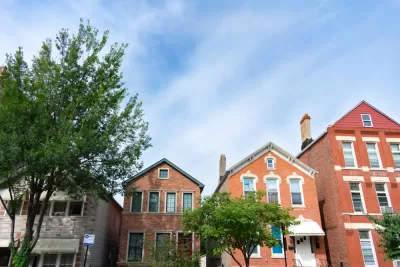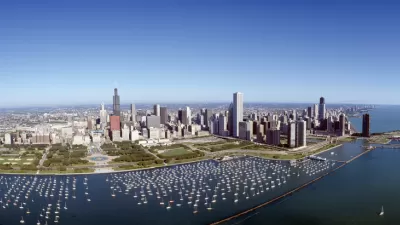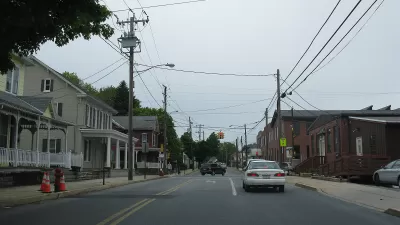New zoning controls would make it harder to convert multi-unit residential buildings into single-family homes to prevent displacement in single-family neighborhoods in Chicago.

Alex Nitkin reports that planning and housing officials in the city of Chicago "are looking to introduce an ordinance this month to make it harder to convert some small apartment buildings into single-family homes, a process blamed for the loss of affordable housing in gentrifying areas."
"[T]he ordinance will require property owners to apply for a zoning change before converting two- to six-unit apartment buildings into single-family homes in some multifamily residential zones," reports Nitkin.
According to the article, the new ordinance is targeted specifically at the Pilsen neighborhood and the area around the Bloomingdale Trail, née The 606. By making it more difficult to convert multi-family housing to single-family homes, the ordinance is designed to reduce displacement and maintain the current character of the neighborhood, according to a statement from the Chicago Department of Housing.
There are more details to consider:
In single-family zoning districts in the 606 area, the ordinance would only allow the construction of single-family homes on blocks where detached homes make up the majority of buildings, officials said. In Pilsen, the ordinance would block new single-family homes in RT-4 and RM zoning districts, pushing developers to seek zoning changes.
Additional statements from city officials, including Patrick Murphey, zoning administrator for the Chicago Department of Planning and Development, and additional geographic detail of the ordinance are available in the source article.

Planetizen Federal Action Tracker
A weekly monitor of how Trump’s orders and actions are impacting planners and planning in America.

Map: Where Senate Republicans Want to Sell Your Public Lands
For public land advocates, the Senate Republicans’ proposal to sell millions of acres of public land in the West is “the biggest fight of their careers.”

Restaurant Patios Were a Pandemic Win — Why Were They so Hard to Keep?
Social distancing requirements and changes in travel patterns prompted cities to pilot new uses for street and sidewalk space. Then it got complicated.

Platform Pilsner: Vancouver Transit Agency Releases... a Beer?
TransLink will receive a portion of every sale of the four-pack.

Toronto Weighs Cheaper Transit, Parking Hikes for Major Events
Special event rates would take effect during large festivals, sports games and concerts to ‘discourage driving, manage congestion and free up space for transit.”

Berlin to Consider Car-Free Zone Larger Than Manhattan
The area bound by the 22-mile Ringbahn would still allow 12 uses of a private automobile per year per person, and several other exemptions.
Urban Design for Planners 1: Software Tools
This six-course series explores essential urban design concepts using open source software and equips planners with the tools they need to participate fully in the urban design process.
Planning for Universal Design
Learn the tools for implementing Universal Design in planning regulations.
Heyer Gruel & Associates PA
JM Goldson LLC
Custer County Colorado
City of Camden Redevelopment Agency
City of Astoria
Transportation Research & Education Center (TREC) at Portland State University
Camden Redevelopment Agency
City of Claremont
Municipality of Princeton (NJ)





























